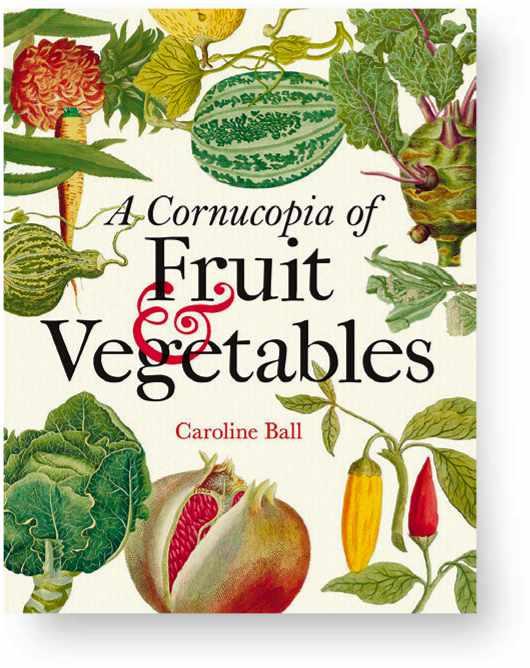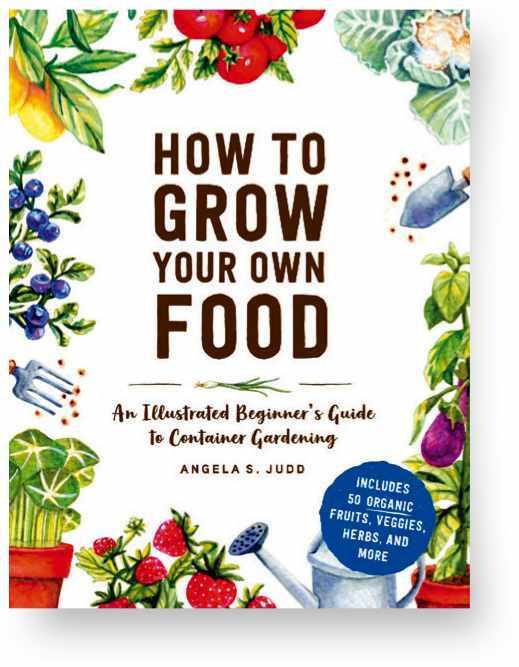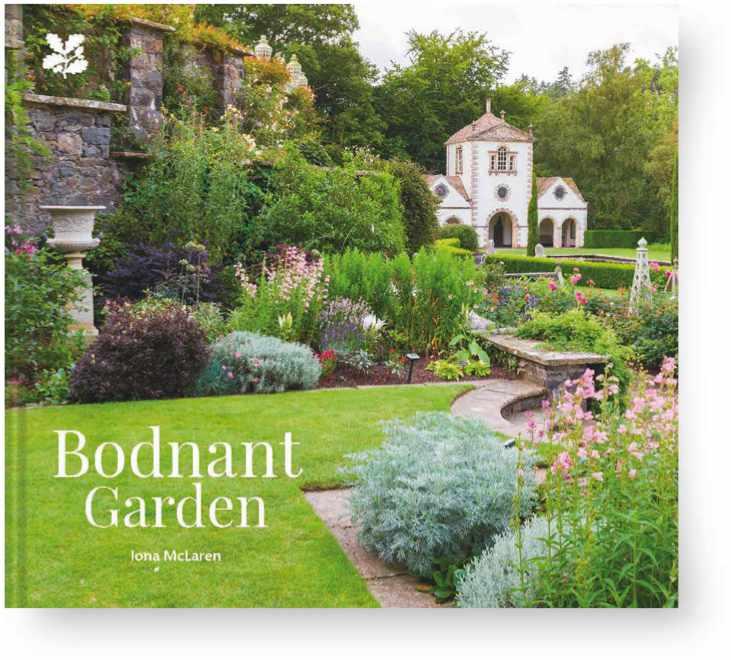
9 minute read
Books New books, including
A CORNUCOPIA OF FRUIT & VEGETABLES
by Caroline Ball
Bodleian Library, £15 ISBN 978-1851245666
Delve into the fascinating, pictorial world of 18th-century edible produce with this colourful compendium of botanical artwork.
Reviewer Katy Merrington is cultural gardener at The Hepworth Wakefield.
THE JOY OF GARDENING: THE EVERYDAY ZEN OF MOWING THE LAWN
by Ellen Mary
Greenfinch, £14.99 ISBN 978-1529412864
A delightful and inspiring read, perfectly suited to the beginner, that encompasses a mindfulness approach towards gardening.
Reviewer Katie Beale is editorial assistant for Gardens Illustrated.
Blushing peaches, sturdy turnips, hairy carrots and pink-veined cabbages all grace the pages of this trimly digestible picture book. Selected fruit and vegetable portraits have been chosen from the weighty volumes of the Phytanthoza Iconographia. This historic A to Z of plant life was published in four volumes between 1734 and 1745 by ambitious apothecary Johann Wilhelm Weinmann, who sought to portray and describe thousands of plants in a vastly encyclopaedic work.
Weinmann employed a succession of talented artists, writers and printmakers to collaborate on the project and the mezzotints and handcoloured etchings reproduced here have a soft and faithful clarity that belie their age. Each fruit and vegetable specimen sits succinctly on its own white page, an archetype, an object separated from the conditions in which it grows, yet ripe and swollen with life.
The plant portraits are presented unnamed and severed from the Latin and German text that originally accompanied them. A key at the back of the book provides the names and you must flip back and forth in a game of identification. The illustrations therefore stand alone, serving to highlight their compositional eloquence – some like decorative motifs, with looping tendrils and meandering stems, others detailed and singular, as they capture the totality of a kohlrabi, or the life cycle of an asparagus stem.
The book begins with an introductory essay, giving the reader a useful glimpse into Weinmann’s career and his mammoth undertaking of botanical study. This minihardback is a mere handspan across and doesn’t attempt to profile the featured fruit and vegetables within the context of 18th-century culture or cuisine. Rather the book is a taster of the Iconographia’s celebrated artwork, and a beautiful catalogue of the colours, shapes, forms and patterns found in edible plants. In an uplifting book aimed at the novice gardener, Ellen Mary, one half of the The Plant Based Podcast, sets out to explore how gardening and well-being are linked through the perspective of mindfulness. She takes on themes such as visualisation and drawing to capture an ideal garden, and the concept of a sensory garden, emphasising the importance of a connection with the senses and one’s inner sense of contentment.
Mary encourages keeping a garden journal, taking photographs and enjoying the progress and fulfilment of gardening as an exercise. I enjoyed the chapter ‘Sowing Seeds for Serenity’, dedicated to the holistic and therapeutic process of gentle gardening, without mechanical means or pressured process. The chapter on companion planting is a handy guide on the best companion combinations, without the jargon and formality of some books. The friendly tone will appeal to a younger, novice audience, especially one with a discerning interest in, and appreciation of, the concept of well-being.
Experienced gardeners may be concerned by the subtitle The Everyday Zen of Mowing Your Lawn – suggesting that mowing is the way to go for an instant buzz and easy, tick-box gardening. I too approached it with caution, but was pleasantly surprised to find that the chapter on mowing your lawn does mention the subject of ‘no mow’ and its benefits. The simplistic approach does, however, occlude some of the more widely publicised initiatives for not mowing lawns. I would have liked more detail on the subject, but am aware that this may have been beyond the remit of the book.
The inclusion of colourful plant illustrations by Romy Palstra helps to make this a pleasant read, and an ideal gift for any budding younger gardener. The overall tone of the book – engaging and accessible – and its focus on mindfulness and appreciation, reminds us that gardening is something we should all enjoy, not just do.
BOOK REVIEWS

HOW TO GROW YOUR OWN FOOD: AN ILLUSTRATED BEGINNER’S GUIDE TO CONTAINER GARDENING
by Angela S Judd
Adams Media Corporation, £12.99 ISBN 978-1507215722
This brightly illustrated, user-friendly guide to container growing is bound to inspire any budding edible gardener looking to grow their own crops.
Reviewer Claire Ratinon is a writer and organic food grower.
For those who know me, it will come as no great surprise that I am over the moon to see more and more budding gardeners learning how to grow edible plants in pots. Given that container gardening makes growing easier for people with small gardens, as well as for those living in rented or temporary accommodation, and those with accessibility considerations, it’s inspiring to see more books being written on the subject. Angela S Judd’s How to Grow Your Own Food is no exception, and makes a wonderful addition to the collection.
Walking you through the how and why of container gardening in the first part of the book, Judd sets out – in an accessible and engaging manner – the parameters and principles of setting up an edible container garden. The second part of the book is dedicated to a directory of plants that grow well in pots, noting the level of difficulty for individual specimens and offering helpful tips for each. The plant list includes some exciting suggestions for plants that I’ve not yet tried to grow, such as ginger, turmeric and Malabar spinach, and a few that I’d thought too large to do well in pots, such as cabbage and cauliflower.
Especially helpful is the troubleshooting section at the end of the book for tackling deficiencies, pests and diseases. Knowing how to spot and deal with an issue (and what not to worry about) is often the trickiest part of developing the skills to grow food, so this user-friendly section is a worthwhile inclusion.
For such a comprehensive guide, I was surprised to see that detailed instructions for seed sowing and raising young plants are not included, as this can be where aspiring food growers can come unstuck early on. Nonetheless, How to Grow Your Own Food is an attractive, helpful book, bound to inspire and support hopeful edible gardeners in making the most of their sunny spaces.
DEEPER INTO THE WOOD
by Ruth Pavey
Duckworth Books, £14.99 ISBN 978-0715654279
A year in the life of one woman acting as steward of a Somerset woodland and the legacy she hopes to leave behind.
Reviewer Catherine Smalley is a freelance writer and gardener.
If, like me, you dream of one day buying a patch of land to rewild, you’ll enjoy Ruth Pavey’s latest book. In her debut, A Wood of One’s Own, she told the story of a four-acre scrub woodland that she has cared for over the past 20 years. Now, she reflects on its current state and what the future holds for this much-loved retreat above the Somerset Levels.
Travelling up and down from her London home, Pavey charts her interactions with the wood through the course of the seasons over one year. In warm, lyrical prose she describes the trials and tribulations of land management – grafting apple trees, tackling unruly brambles and staking out boundaries – while also delving into local history and recounting colourful encounters with various visiting experts, from a ‘moth man’ to an ‘orchard guru’. Sketchbook-style illustrations further reveal her affection for this place.
The book’s tone is unsentimental, yet the alarming decline of fauna and flora in the woodland and surrounding landscape reverberates unnervingly through its pages and becomes a recurring motif. ‘One sad aspect of worrying about the state of the natural world is that everything starts to look wrong,’ Pavey writes. It’s there in the ash dieback, the unseasonable weather, and – importantly – the sudden disappearance of the rabbits. She worries about encroaching developers, intensive farming and who will look after her land when she’s gone.
While rooted in this particular corner of the West Country, the truths that Deeper into the Wood tells about our rapidly changing landscapes and natural world are universal. It could make for a rather sobering, melancholy read, but Pavey’s self-deprecating humour shines through and I was heartened by this tale of one woman doing her best to bravely carve out a space for wildlife, learning along the way.
BOOK REVIEWS
BODNANT GARDEN
by Iona McLaren

Pitkin Publishing, £16.99 ISBN 9781841658919
A beautifully illustrated guide to the much-loved National Trust garden and the fascinating history of the remarkable family who created it.
Reviewer Juliet Giles is production editor for Gardens Illustrated.
Bodnant near Colwyn Bay in North Wales is one of the National Trust’s best-loved gardens. Thousands visit each year to explore its elegant terraces with their stunning views of the Carneddau mountains and lose themselves in its beautiful woodland walks. Sometimes quite literally as the paths that stretch across the 80 acres are, according to author Iona McLaren, more numerous ‘than strands of pasta in a dish of spaghetti’.
McLaren is better placed than most to guide us round Bodnant’s winding paths and unravel the many strands of its history. She grew up here and her family have lived at Bodnant since her three-times great grandfather Henry Davis Pochin bought the property in 1874.
This then is the story not just of a garden but of its creators, from Pochin, the self-made businessman who laid out much of the garden, planting its famous Laburnum Arch, via the exploits of the early 20th-century plant hunters to McLaren’s father and the garden’s more recent revamping under the seven-year stint as head gardener of Troy Scott Smith from 2006.
But the bulk of Bodnant’s story, and of this book, belongs to Pochin’s grandson, Henry McLaren, 2nd Lord Aberconway, whose mother gave him ‘free rein to do what he wanted with the garden’ when he was barely out of his teens. It was Harry, as he was known, who crafted the garden’s Italianate terraces, planted its Gravetye-inspired rose garden, introduced many of its rare plants and obsessively collected the rhododendrons for which Bodnant is famed – many hybridised by his talented head gardener Frederick Puddle. It was Harry too who as president of the RHS helped to bring Bodnant and other great gardens under the guardianship of the National Trust.
All is entertainingly told and brought to life with black-andwhite family snapshots and beautiful photography of the gardens that are sure to whet the appetite of anyone yet to discover the gardens themselves.
Other books
This month’s additional books will get you propagating, growing inside and out, and identifying insects.
THE FORAGER’S GARDEN
by Anna Locke Permanent Publications, £9.95, ISBN 978-1856233071 An essential guide on how to create a thriving foraging garden that will provide pleasure throughout the year, encourage wildlife and help you reconnect with nature.
EMBRACE YOUR INNER PLANT LADY
by Emma Bastow HarperCollins, £9.99, ISBN 978-0008454968 A light-hearted read providing essential tips and some savvy, low-cost methods for caring for your houseplants.
BRITAIN’S INSECTS
by Paul D Brock Princeton University Press, £25, ISBN 978-0691179278 A comprehensive guide on Britain and Ireland’s insects, with identification tools, key information and more than 2,000 beautifully shot photographs.
THE PLANT PROPAGATOR’S BIBLE
by Miranda Smith Cool Springs Press, £12.99 ISBN 978-0760369791 Suitable for both beginners and advanced gardeners, this re-release provides detailed, step-by-step guidance on cultivating new plants.
GROWING FLOWERS
by Niki Irving Mango Media, £26.95, ISBN 978-1642505504 This vibrant book is aimed at the beginner and is packed full of useful tips on how to create a cutting garden and arrange the blooms that you grow.










